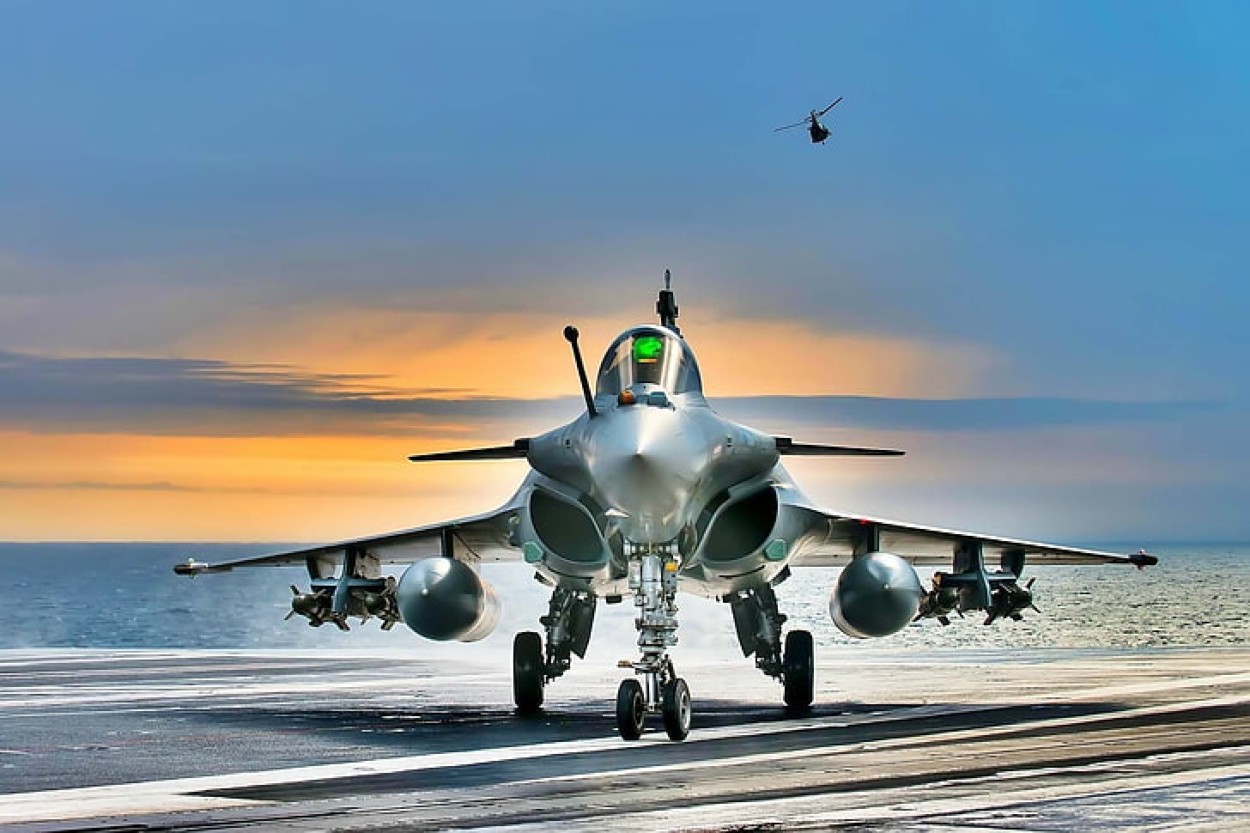OPED By Group Cpt TP Srivastava (Retired), Indian Air Force
January 31, 2012, was a day of celebration for French aviation giant Dassault Aviation. They were declared the winner of an Indian Air Force tender to buy 126 Rafale fighter aircraft – 18 in fly-away condition and a balance of 108 to be assembled in India.
France had allocated US$60 billion for its 2011-12 annual defense budget and had already invested nearly US$50 billion towards the development of Rafales. But there were no takers for the Rafale jets globally until India provided the proverbial ‘military oxygen’ to a nearly bankrupt industry by selecting it for a possible US$10.4 billion deal.
French connection with Indian military aviation dates back to the late 1950s and early 1960s when India had neither acquired the US nor Russian (then USSR) military equipment.
The Indian Air Force (IAF) fighter fleet was equipped with Ouragon (Toofani in Indian parlance) and Mysteres. The reliable Allouette helicopter and its derivative are still whirring in Indian skies.
In the early 1980s, the French connection became even more vital when the military purchased two squadrons of Mirage-2000, then and even now, state-of-the-art modern fighters.
The ‘golden moment’ of the Indo-French connection was in early 2004, when Chuck Eddleston, CEO of Dassault Aviation, traveled to India with his team on his own with a ‘mouth-watering’ unilateral offer.
Alas, it was rejected by an ignoramus Defence Secretary. The ghost of Bofors had struck a telling blow to the Indian military. French offer of Mirage-2000-5, along with simultaneous induction of Rafales in the French and Indian Air Force, was rejected because of maintaining transparency in defense deals; hence, ‘SINGLE TENDER CONTRACTS’ were not being entertained.
France had offered to transfer and install the entire assembly/manufacturing facility of Mirage-2000-5. That advanced technology we so severely need would probably have been an automatic byproduct along with aero-engine technology. The icing was a French offer to give specific numbers of then-being-developed Rafales at 25% of the present cost.
For records, the Mirage-2000 deal with France and the MiG-29 deal with Russia (for two squadrons each) in the early 1980s were single-contract deals for all purposes.
Rafale Deal
Rafale deal has already witnessed four distinct stages, each separated by a few years.
Unilateral French Offer in 2004. Had the deal been fructified, the Indian military would have been far more robust than it is now. Also, the entire acquisition would have been at 25% of the present cost. But who cares? In India, no one is accountable for such delays/decisions.
Original Tender Winner in 2012. The UPA government tender for 126 Rafaels was decided on January 31, 2012, but did not fructify into a contract due to various administrative issues.
36 Rafales for IAF in 2016. The Narendra Modi government modified the deal when it came to power in 2014. An earlier decided tender for 126 aircraft was scrapped. The number of aircraft procured in fly-away condition was reduced to 36. The new deal, signed in 2016, was the first significant weapons deal by the Modi government through an Inter-Governmental Agreement (IGA). Dassault Aviation has now delivered all the 36 Rafales.
26 Maritime Rafales for the Indian Navy in 2024. The deal for 26 Rafale Marine jets for the Indian Navy, in all likelihood, will be signed during the forthcoming visit of French President Macron in January 2024 when he attends India’s Republic Day celebrations as the chief guest. This would also be an under an IGA. Should this deal fructify, France would have sold 62 Rafaels to India. 26 Rafale Marine jets will add more teeth to the Indian military’s Air Power.
Future
France will continue to woo the Indian government to purchase more Rafales to fill the gap in the IAF fleet of originally envisaged 126 modern jets. The IAF proposal to buy 114 fighters is still pending.
This is notwithstanding the agreement for an additional 97 Tejas Mk-1A variants. Other vendors are also in the queue to bag the lucrative 114-jet deal.

President Macron might go further by offering aero-engine technology transfer and a long-term deal for an additional 64 Rafale aircraft. The exact timeline for the supply of the maritime variant of Rafale is not yet known if the agreement is signed in January 2024.
A fair guess would be early 2027 at the earliest.
India has no option but to invite foreign vendors to supply the new fighter for the Indian military. Fighter squadron strength is depleting rapidly, with three remaining MiG-21 squadrons likely to retire in a glorious sunset within the next couple of years.
The forthcoming deal for the Rafale Marine jets under the IGA also highlights the uselessness of the current Defense Acquisition Procedures.
No less than the Prime Minister himself has realized that our existing dispensation responsible for weapons procurement is incompetent and inefficient. To hasten the process, which is a national security imperative, a more straightforward option is to sign the IGAs.
- Gp Cpt TP Srivastava (Retd) is an ex-NDA who flew MiG-21 and 29. He is a qualified flying instructor. He commanded the MiG-21 squadron. He is a directing staff at DSSC Wellington and chief instructor at the College of Air Warfare. VIEWS PERSONAL OF THE AUTHOR
- The Author tweets at:@capt_tp
- Follow EurAsian Times on Google News